
Entering the United Kingdom market for cocoa
Imports of cocoa beans by the UK are heavily dominated by 2 supplying countries: Ivory Coast and Ghana. Imports from Latin American countries are increasing, providing interesting opportunities for a wider range of suppliers. To export to the UK, you must comply with British import regulations. These regulations have not been significantly affected by Brexit and remain largely similar to those of the EU, but it is important to keep an eye on changes.
Contents of this page
1. What requirements and certification must cocoa comply with to be allowed on the United Kingdom market?
You can only export cocoa beans to the United Kingdom (UK) if you comply with British import requirements. As of 1 January 2021, European Union (EU) trade agreements no longer apply to the UK. Yet to ensure continuity between non-European suppliers and UK businesses, the UK has established new trade agreements with countries, largely keeping the trading agreements that previously applied. A complete overview of these trade agreements and their status can be found online.
Buyer requirements can be divided into the following:
- Mandatory requirements;
- Additional requirements that buyers often have;
- Requirements for niche markets.
The highlights for these requirements are given below, specified for the British market when relevant.
Legal and non-legal requirements you must comply with
Legal requirements
You must follow the British legal requirements for cocoa, which mainly deal with food safety and hygiene. Related to this are the legal limits for food contaminants, of which the most common are:
- Pesticides (maximum residue levels (MRLs) for each pesticide are still regulated in the UK under EU Regulation (EC) No 396/2005; for an overview of all MRLs, consult the UK pesticide database);
- Mycotoxins (ochratoxin A is of special relevance for cocoa);
- Polycyclic-aromatic hydrocarbons (PAHs);
- Microbiological contamination such as salmonella (although cocoa is considered low risk);
- Heavy metals such as cadmium (which is a particular problem for cocoa from some Latin American countries due to factors like volcanic activity and forest fires).
Quality requirements
If you want to access the British market for cocoa beans, you will have to meet your buyer’s quality standards. These are particularly high within the specialty segment for fine flavour cocoa beans.
Buyers in the United Kingdom and elsewhere currently assess the quality and flavour of cocoa beans in different ways and often use a combination of 2 or more methodologies. The guide Cocoa Beans: Chocolate & Cocoa Industry Quality Requirements provides recommendations on cocoa growing, post-harvest practices and quality evaluation methods that contribute to cocoa quality.
Other common cocoa quality assessment methodologies and international cocoa standards commonly used by chocolate makers and cocoa traders include the following:
- ISO’s Standards on classification and sampling for cocoa beans;
- The Fine Cacao and Chocolate Institute (FCCI): check its website and contact FCCI for its sampling protocol and grading form;
- Heirloom Cacao Preservation’s genetic evaluation of cocoa to identify and value cocoa and its flavour;
- Equal Exchange/TCHO’s quality assessment and tasting guide to assess the quality of cocoa along the value chain.
In addition, a workgroup of the Cocoa of Excellence Programme, which is coordinated by the Alliance of Bioversity International and CIAT, has launched the International Standards for the Assessment of Cocoa Quality and Flavour website. Here, you can download the protocols on the quality standards.
These protocols describe step by step how to: 1) sample cocoa beans for evaluation; 2) assess their physical quality; 3) process them into coarse powder, liquor and chocolate; and 4) establish a sensory evaluation of the flavours expressed in these 3 products.
Labelling requirements
The information provided by labels must be easy to understand, easily visible and clearly readable and should be written in a language easily understood by the purchaser. For the United Kingdom, this will be the English language.
The label should include the following to ensure traceability of individual batches:
- Product name;
- Grade;
- Lot or batch code;
- Country of origin;
- Net weight in kilogrammes.
If your cocoa is organic and/or Fairtrade certified, the label should contain the name/code of the inspection body and certification number.
Figure 1: An example of cocoa bean labelling

Source: own picture
Packaging requirements
Cocoa beans are traditionally shipped in jute bags, which can weigh between 60 and 65 kilogrammes. On the mainstream market, bulk shipment of cocoa beans has become more popular. This means cocoa beans are loaded directly into the ship’s cargo hold or in shipping containers containing a flexi-bag (see Figure 2). This mega bulk method is often adopted by larger cocoa processors, which handle cocoa beans of standard qualities.
In the specialty cocoa segment, jute bags are still commonly used. For very high-quality micro lots, vacuum-sealed GrainPro packaging can be used.
Figure 2: Examples of packaging for cocoa: jute bag, container-sized flexi bag and GrainPro

Sources: Osu.edu, Bls.bulk.com and GrainPro
Tips:
- Activate the “Translation” function of your browser to make the studies available in your native language.
- For buyer requirements on the EU market, read the study on buyer requirements for cocoa in Europe.
- Check the website of Food Standards Agency for more detailed information about the regulations concerning imports of non-animal products into the United Kingdom.
- Read more about the quality requirements of the European industry for cocoa beans on the Cocoa Quality website.
- Learn more about maintaining the quality of your cocoa during transportation on the website of the Transportation Information Service.
- Read more about delivery and payment terms for your cocoa bean exports in our study Organising your cocoa bean exports to Europe.
Additional requirements to keep up with the market
Additional food safety requirements
You can expect buyers in the United Kingdom to request extra food safety guarantees from you. Regarding production and handling processes, you should consider the following:
- Implementation of good agricultural practices (GAPs): the main standard for good agricultural practices is provided by GLOBALG.A.P. This is a voluntary standard for the certification of agricultural production processes that provide safe and traceable products. Note that certification organisations (such as Rainforest Alliance/UTZ) often incorporate GAP in their standards.
- Implementation of a quality management system (QMS): a system based on Hazard analysis and critical control points (HACCP) is often a minimum standard required at the level of storage and handling of cocoa beans. If you export semi-finished cocoa products, some buyers will also expect you to have certification, such as British Retail Consortium Global Standards (BRCGS), International Featured Standards: Food (IFS) or Food Safety System Certification (FSSC 22000) certificates for your manufacturing facilities.
Additional sustainability requirements
Corporate responsibility and sustainability have become very important in the entire European cocoa sector. Leading companies active in the British cocoa and chocolate market have sustainability policies highlighting their relationship with farmers, transparency in their operations as well as their social and environmental impact at origin. Examples of these company policies or codes of conduct are those of multinational Olam Food Ingredients (ofi) and British retailer Marks & Spencer.
As an exporter, adopting codes of conduct or sustainability policies related to your company’s environmental and social impacts may give you a competitive advantage. In general, it is likely that buyers will require you to comply with their code of conduct and/or fill out supplier questionnaires explaining your sustainability practices.
Certification standards are usually part of the sustainability strategy of traders, cocoa processors, chocolate manufacturers and retailers. As such, standards like Rainforest Alliance/UTZ have become increasingly important in the mainstream cocoa market.
In addition, the UK government is working on how to implement the due diligence laws on forest risk commodities, which are part of the Environment Act. These laws will make it illegal for larger businesses operating in the UK to use commodities that have been produced on land illegally occupied or associated with large-scale forest loss, such as cocoa. Once operational, buyers might forward some of the implications of the regulation onto cocoa suppliers and/or exporters.
Tips:
- Refer to the International Trade Centre Standards Map or the Global Food Safety Initiative website to learn about the different food safety management systems, hygiene standards and certification schemes.
- Find out which standards or certifications are preferred by potential buyers in your target segment. Buyers may have preferences for a certain food safety management system or sustainability label, depending on their end clients and/or distribution channels.
- Carry out a self-assessment to measure how sustainable your production practices are. You can fill out this online self-assessment form by Amfori BSCI to assess your social performance. This Excel form by the Sustainable Agriculture Initiative (SAI) Platform can be used to assess the sustainability performance of your farm.
- See our study on certified cocoa for more information about the demand for sustainable cacao on the European market, trends and specific trade channels.
Niche requirements
Organic
To market your cocoa as organic in the British market, it must comply with the regulations of the UK. The following regulations apply: Retained Council Regulation (EC) 834/2007, Retained Commission Regulation (EC) 889/2008, Retained Commission Regulation (EC) 1235/2008 and the Organic Products Regulations 2009.
Before you can market your cocoa beans as organic, an accredited certifier must audit your growing and processing facilities. Refer to this list of control bodies and control authorities that are recognised in the United Kingdom, to ensure that you always work with an accredited certifier. To become organic certified, you can expect a yearly inspection and audit which aims to ensure that you comply with the rules on organic production.
All organic products imported into Great Britain (consisting of England, Scotland and Wales and their associated islands) must have the appropriate electronic GB Certificate of Inspection (COI). If you want to export to Northern Ireland, you will need an EU electronic COI, which can be completed by using the European Commission’s electronic Trade Control and Expert System (TRACES). All COIs must be issued by control authorities prior to the departure of a shipment. If this is not done, your product cannot be sold as organic in the UK and will be sold as a conventional product.
Note that, on the British market, private labels such as Soil Association are very popular. On its website, you can find the specific standards of this label.
Figure 3: Soil Association Organic Symbol
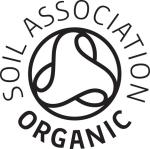
Source: Soil Association Web Page
Fair trade
The United Kingdom is a large market for fair trade cocoa. The most common fair trade standard in the United Kingdom is Fairtrade. The accredited certifier for Fairtrade is FLOCERT. Another, though less common standard on the British market is SPP (Small Producers’ Symbol).
Tips:
- Learn more about the rules for trading organic food on the UK’s government website and the Organic Export Info website.
- Refer to these explanatory notes for help filling out a COI.
- Familiarise yourself with the range of organisations and initiatives that offer technical support to help you convert to organic farming. Start your search at the organic movement in your own country and ask if it has its own support programmes or knows about existing initiatives. Refer to the database of affiliates of IFOAM Organics to search for organic organisations in your country.
- Find companies that specialise in organic products on the website of Organic-bio.
- Try to visit trade fairs for organic products, like Biofach in Germany. Check out its website for a list of exhibitors, seminars and other events at this trade fair.
- If you produce cocoa according to a Fairtrade scheme, find a specialised British buyer who is familiar with sustainable and/or fair trade products, for instance via the FLOCERT customer database. The website of Fairtrade UK also lists its British partners.
- Try to combine audits, if you have more than 1 certification, to save time and money. Also, investigate the possibilities for group certification with other producers and exporters in your region.
2. Through what channels can you get cocoa on the United Kingdom market?
Cocoa and cocoa products are used for processing in several industries, mainly confectionery, food, cosmetics and pharmaceutical. This document focuses only on the confectionery industry, as this is the main segment for cocoa beans. The confectionery industry mainly processes cocoa liquor and butter into chocolate products, such as chocolate bars, candy bars and bonbons.
How is the end market segmented?
The confectionery industry can be segmented according to the quality of the end products. For cocoa beans, the end products mainly consist of chocolate bars.
Figure 4: Segmentation of the chocolate market based on quality

Source: ProFound
In the United Kingdom, supermarkets are the main sales channel for chocolate products. Supermarkets have a wide variety of chocolate products, ranging from low-end to higher-end products. The largest retailers by sales value in the United Kingdom are:
The market share of overall private labels in British supermarkets reached a market share of nearly 48% in 2020. This indicates that there is also a wide variety of private label chocolate brands available in British supermarkets. These private label products are increasingly popular because they offer the same quality and characteristics as branded products but are usually offered at more competitive prices.
Low end: the low-end segment offers cheap chocolate products, with lower cocoa content. The products are often produced by large chocolate manufacturers, using mainly bulk cocoa from West Africa (Forastero variety). Bulk cocoa is characterised by high volumes, low value and standard quality. Rainforest Alliance/UTZ-certified cocoa is often used to certify low-end products.
Many chocolate manufacturers use mass balance sourcing for their cocoa, meaning that Rainforest Alliance-certified cocoa and non-certified cocoa are mixed during shipping and manufacturing. As a consequence, certified cocoa may end up in non-certified products, or the other way around. Still, the volumes of certified cocoa that are sourced by a certain company will match the number of chocolate products that carry the Rainforest Alliance-logo.
The lower-end chocolate products are mainly found in supermarkets. These are usually mass-market products of big brands and lower-quality private label products from retailers themselves.
Examples of brands and an indication of consumer chocolate prices (based on Sainsbury's retail prices in 2022) in UK supermarkets for lower-end products are:
| Product | Picture* | Price (€/kg) | |
| Lower end | Lovett’s (private label brand, dark chocolate, 44%, Rainforest Alliance certified, 100 grammes) | 
| €3.57/kg |
| Sainsbury’s (private label brand, dark chocolate, 70%, Rainforest Alliance certified, 100 grammes) | 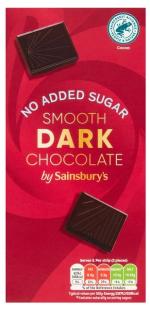
| €10.17/kg | |
| Cadbury (milk chocolate, sourced through Mondelez’s Cocoa Life programme, 110 grammes) | 
| €16.28/kg |
*Source of pictures: Sainsbury’s
Middle range: the middle-range segment includes chocolate products of good quality, which are commonly sustainably certified. Storytelling and the origin of the cocoa beans are important in this segment, mainly for marketing purposes.
Middle-range products are also mainly sold through supermarkets and are usually the high-quality category of retailers. Supermarkets increasingly offer their own premium private label chocolate products. These products offer similar quality and characteristics as branded products but are usually offered at more competitive prices. Besides mainstream supermarkets, middle-range products can also be found in more specialised organic or fair trade shops.
The table below gives some examples of middle-range chocolate brands as well as an indication of consumer prices for these products (based on Sainsbury's retail prices in 2022):
| Product | Picture* | Price (€/kg) | |
| Middle range | Sainsbury’s Taste the Difference (private label brand, dark chocolate, 72%, origin Dominican Republic, Rainforest Alliance certified, 100 grammes) | 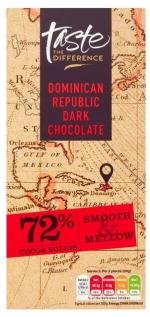
| €17.28/kg |
| Lindt Excellence (dark chocolate, 70%, 100 grammes) | 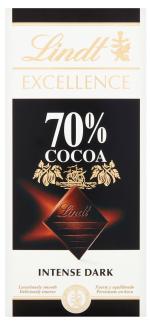
| €23.92/kg | |
| Green & Black’s (dark chocolate, 70%, Fairtrade and organic certified, 90 grammes) | 
| €26.58/kg |
*Source of pictures: Sainsbury’s
High end: smaller, more specialised chocolate makers produce high-end chocolate products, mainly using fine flavour cocoa (usually Criollo and Trinitario varieties, and/or to a lesser extent Forastero). These products are characterised by a high cocoa content. Single origin of the cocoa beans is important, both for the taste and for the traceability of the cocoa. Single origin means that the buyer knows exactly where the cocoa beans are from and that it is a specific cocoa rather than a blend. Bean-to-bar chocolate is a good example of a high-end product.
High-end products are mainly sold at chocolate events and in specialty shops. Examples of e-specialty shops in the United Kingdom are Chocolate Trading Company, Chocolate Seekers and Cocoa Runners. The website of the Fine Cacao and Chocolate Institute and this list on beantobar.be provide you with more examples of bean-to-bar chocolate makers and shops in the United Kingdom.
Some examples and an indication of consumer prices for high-end chocolate products produced by British chocolate makers (based on retail prices of Cocoa Runners in 2022) are:
| Product | Picture* | Price (€/kg) | |
| High end | Willie’s (dark chocolate, 71%, Madagascar, 80 grammes) | 
| €44.71/kg |
| Pumpkin Street (dark chocolate, 75%, Jamaica, 70 grammes) | 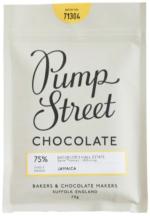
| €106.80/kg | |
| Firetree (dark chocolate, 69%, single estate, Guadalcanal in the Soloman Islands, 55 grammes) | 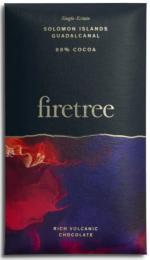
| €151.16/kg |
*Source of pictures: Cocoa Runners
For exporters, it is important to realise that trade prices for cocoa beans and retail prices for chocolates are not always directly linked. As the below figure shows, depending on the end product in which cocoa beans will be used, between 7.3% and a bit over 11% of added value may go to farmers. In addition, cocoa bean export prices, and the share kept by cocoa producers, will depend on the cocoa bean quality, the size of the lot and the supplier’s relationship with the buyer. The largest shares are kept by chocolate companies and retailers.
Tips:
- Monitor end-consumer prices of chocolate to get an idea of price ranges in different market segments in the UK. Good sources for price information are the websites of supermarket chains such as Waitrose and chocolate specialty stores like Cocoa Runners.
- Refer to our study on trends in the cocoa sector to learn more about developments within different market segments.
- Want to sell high-quality cocoas to the British market? Try to establish direct trade relationships with smaller traders and chocolate makers to find shorter entry channels into the market.
- Learn more about cocoa quality. You might be interested in participating in 1 of the cocoa programmes of the Chocolate Institute, such as the cocoa grading course or the specialty cocoa growing training.
Through what channels does cocoa end up on the end market?
As an exporter, you can use different channels to bring your cocoa to the British market. Entering the market will vary according to the quality of your cocoa beans and your supply capacities.
It is important to realise that the European market is moving towards shorter supply chains. This means retailers and cocoa processing companies are increasingly sourcing their cocoa beans directly. The below figure shows you the most important channels for cocoa beans in the United Kingdom.
Figure 6: The main channels for export of cocoa to the United Kingdom
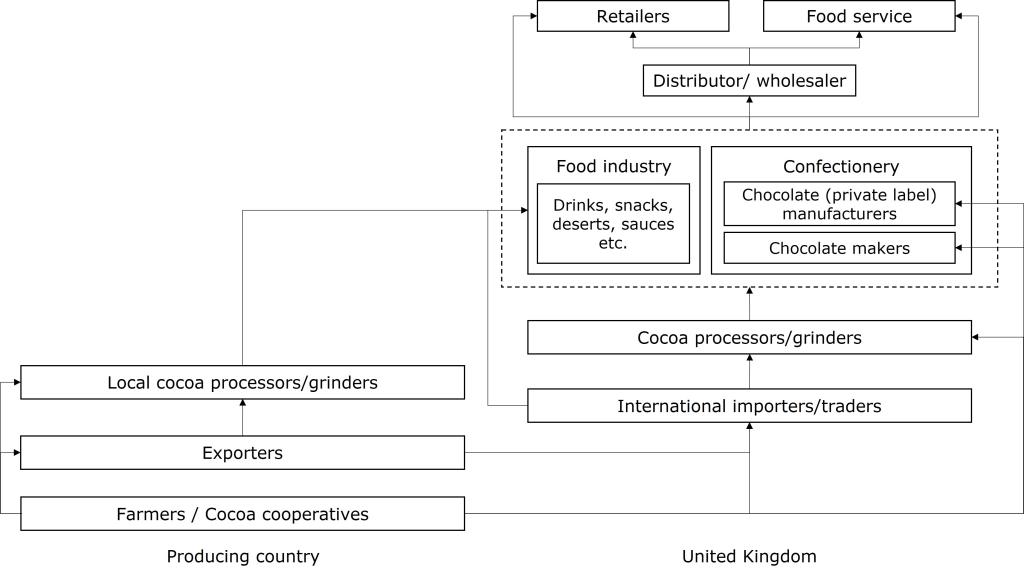
Source: ProFound
Cocoa bean processors/grinders
Large processors/grinders source their cocoa beans directly from producing countries. They process the raw material into cocoa mass, cocoa butter and/or cocoa powder, which they distribute to the confectionery, food, cosmetic and pharmaceutical industries throughout Europe.
Examples of cocoa bean processors/grinders in the United Kingdom are Cargill, Olam Food Ingredients (ofi) and Barry Callebaut. These companies have integrated activities such as importing, processing and manufacturing and sell industrial chocolate to other businesses. Multinationals Mondelez and Nestlé also have integrated activities and manufacture end products, supplying directly to the retail or food service sector.
For whom is this an interesting channel? If you are an exporter of high volumes of bulk beans, then your direct trading partner is usually a cocoa grinder/processor. These companies tend to buy high volumes of standard qualities. They usually have cocoa-buying stations in producing countries to which you can sell your cocoa beans directly.
Importers
Importers of bulk cocoa beans normally handle large quantities and have direct contacts with exporters in producing countries. In most cases, importers have long-standing relationships with their suppliers.
An example of a large importer of cocoa beans and/or semi-finished cocoa products active in the United Kingdom is Ecom. Importers active in the specialty segment usually deal with smaller quantities and often work directly with producers and producer cooperatives. An example of a specialty trading company in the United Kingdom is Twenty Degrees Cacao (part of the Olam Group).
For whom is this an interesting channel? For exporters working with high volumes of bulk beans from producers/cooperatives, large companies that engage in cocoa processing activities and importing can serve as a gateway into the British market. If you deal with bulk cocoa, discuss certification possibilities with your buyer.
The best option for farmers or farmers’ cooperatives with specialty or certified cocoa is to sell cocoa beans directly to specialised cocoa importers. This is because many specialised importers prefer to work directly with producers and/or cooperatives and not through exporters.
Also, if you produce or have very high-quality cocoa beans and are working through an importer, it might be interesting to discuss the possibilities to directly link up with high-end chocolate makers. This is mainly an opportunity for those that have the financial means and technical know-how to access the market directly.
Large (private label) chocolate manufacturers
The largest industrial chocolate manufacturer worldwide is Barry Callebaut, which has British production facilities in Moreton and Banbury. Other large chocolate manufacturers active on the British market are Mars, Mondelez and Nestlé. These companies all have their own importing departments and source their cocoa beans directly from producing countries or have hybrid models, which means that their cocoa beans may also be sourced via importers.
Private label manufacturers may also be an interesting entry point for your cocoa beans. These companies are growing in importance as it becomes more common for brands to outsource their production to specialised private label manufacturers. Examples of private label manufacturers in the United Kingdom are Whitakers and Davis Chocolate.
For whom is this an interesting channel? Selling to large chocolate manufacturers is interesting if you have cocoa beans of a standard quality in large volumes.
Small chocolate makers
Especially in the specialty and fine flavour segment, cocoa beans are increasingly traded directly from farmers (or farmer associations and cooperatives) to chocolate makers. Although direct trade is growing, it still represents a very small part of the cocoa market. Not all chocolate makers are able to sustain direct trade and all the responsibilities that are usually outsourced to traders, such as logistics, documentation and pre-financing.
Direct trade can also happen with an importer as an intermediary, acting as a service provider and contact point in the transactions between the producer and the chocolate maker. Importers can also safeguard traceability and communicate the story of the cocoa beans accurately along the chain.
Examples of specialised chocolate (bean-to-bar) makers in the United Kingdom are J.cocoa, Bullion Chocolate, Seed Chocolate and Rio Nuevo.
For whom is this an interesting channel? Targeting specialty chocolate makers directly is recommended for producers and exporters dealing with specialty cocoa beans. This requires financial means and technical know-how to organise export activities. You could also consider setting up local processing facilities to add more value to your cocoa beans. Our study on the European market for semi-finished cocoa products discusses this subject in more depth.
Agents
Agents act as intermediaries between you, cocoa importers and chocolate makers. Some agents are independent, but others are hired to procure cocoa beans on behalf of a company. An agent acts as an intermediary and has the knowledge to evaluate and select interesting buyers for you. An example of a broker/agent in the United Kingdom is Amius.
For whom is this an interesting channel? If you have limited experience exporting to European countries, agents can play a very important role. Agents are also interesting if you lack financial and logistical resources to carry out trade activities. Working with an agent is also useful if you need a trusted and reputable partner within the cocoa sector. Be prepared to pay a commission for their work.
Tips:
- Find buyers in the United Kingdom who match your business philosophy and export capacities (in terms of quality, volume, certifications). For more tips on finding the right buyer for you, see our study on finding buyers on the European cocoa market.
- Attend trade fairs in Europe to meet potential buyers. Interesting cocoa and chocolate trade fairs include those outside of the UK, such as Salon du Chocolat (France) and Chocoa (the Netherlands). Larger fairs like Biofach (Germany, for organic products) and the Speciality and Fine Food Fair (UK, for high-quality products) may also be interesting, although those fairs are not focused on cocoa or chocolate alone. Attending such physical or virtual events can provide you with additional insight into the preferences of British buyers, with regard to origin, flavour and sustainability certification. By understanding the market better, you can ensure that your specific product corresponds to the demand and requirements.
- Use industry associations to find potential buyers in the United Kingdom, such as the British Bakers and Confectioners Association (BCA). On an international level, there is the Federation of Cocoa Commerce, located in London.
- Invest in long-term relationships. Whether you are working through an importer or directly with a chocolate maker, it is important to establish a strategic and sustainable relationship with them. This will help you manage market risks, improve the quality of your product and reach a fair price/quality balance. For more tips, read our study on doing business with European cocoa buyers.
3. What competition do you face on the British cocoa market?
The intensity of rivalry on the market is generally high for bulk cocoa with low added value. This segment is mainly dominated by major suppliers and cooperatives able to deliver large quantities so they can compete on price. It is difficult for small and medium-sized companies to compete within this segment. In the specialty cocoa market, there is more focus on quality, taste and sustainability. However, this market commands smaller volumes, thus rivalry is also becoming increasingly intense.
Ivory Coast and Ghana heavily dominate UK cocoa imports
The largest share of British cocoa bean imports comes from West Africa. In 2021, the United Kingdom imported nearly 74% of its cocoa beans from West Africa. About 63% was supplied by Ivory Coast, amounting to 50 thousand tonnes. The second-largest supplier was Ghana, with 8 thousand tonnes. Between 2017 and 2021, British cocoa bean imports from Ivory Coast decreased by an average annual rate of -3.5%. Ghana registered a year-to-year decline of –8.9%.
In these cocoa producing countries in West Africa, there is a large presence of multinational processing companies (examples: Olam Food Ingredients (ofi) and Cargill), to which small cocoa producers and cooperatives are strongly linked, especially in Ivory Coast.
Ivory Coast and Ghana mainly produce Forastero cocoa beans and focus on the production of large volumes and lower quality. A large share of cocoa produced in these countries is Rainforest Alliance/UTZ certified, which is a common market entry requirement for large manufacturers and retailers operating in mainstream markets.
Despite certification efforts, there are widespread sustainability concerns regarding the cocoa sector in Ghana and Ivory Coast. For instance, cocoa farming has been identified as a main driver of deforestation, which contributes to climate change. As a response, industry players, donors and the governments of Ghana and Ivory Coast launched the Cocoa and Forests Initiative. In addition, child labour in both countries is a returning concern, as an estimated 1.5 million children still work in the cocoa fields of Ghana and Ivory Coast.
In a bid to tackle farmer poverty, the governments of Ghana and Ivory Coast have established minimum export prices for cocoa, with the addition of a fixed ‘living income differential’ on all their cocoa sales (at USD 400 per tonne), applicable from the 2020/2021 crop. However, as a consequence of the abundance of supply and resistance by chocolate companies to paying higher market values, there were key drops in prices for both countries during the last year. The value of cocoa slumped to $2,110 per tonne at the opening of the 2021-22 cocoa season, while the minimum guaranteed producer price was set at around $1,370. This represented a drop of -17.5% when compared to the 2020-21 cocoa season.
Also, Europe has initiated informal dialogues in support of a sustainable cocoa sector globally, and specifically in West Africa. To support this, the EU contributes €25 million to boost sustainable cocoa production in Ivory Coast, Ghana and Cameroon. This support is completed and scaled up by other EU-funded geographic programmes.
The global cocoa industry relies heavily on West Africa for bulk cocoa to produce chocolate products. This dependency for bulk cocoa on the region has only become stronger over the years. In part because countries in other regions like Latin America have started increasingly focusing on producing fine flavour and specialty cocoa. In addition, cocoa produced in West Africa is mainly destined for exports, as domestic consumption is low in the region – unlike in Latin America and several countries in Asia.
Examples of cocoa exporters and producers’ organisations from West Africa that have access to the international market include ECOOKIM and ECAKOOG (Ivory Coast) and ABOCFA and Kuapa Kokoo Cooperative Cocoa Farmers and Marketing Union Limited (Ghana).
Nigeria is the UK’s third-largest direct cocoa bean supplier
Another important direct West African cocoa bean supplier to the United Kingdom is Nigeria, with direct cocoa bean supplies amounting to 1 thousand tonnes in 2021. Nigeria registered a year-to-year decline of -6.5%, which might have to do with lower yields and productivity related to aging trees and farms, pests and disease attacks, labour shortages and little agricultural mechanisation.
According to FAOSTAT data, Nigeria was the world’s fourth-largest cocoa producer in 2020, after Ivory Coast, Ghana and Indonesia. Nigeria is, just like Ivory Coast and Ghana, an important producer and supplier of bulk cocoa to the international market.
Examples of cocoa exporters and producers’ organisations from Nigeria are Agro Trades, Gbemtan Investment Limited and Olantunde International.
Cocoa imports from Latin America to the UK on the rise
Countries in Latin America have been affected by the European Union regulation limiting the maximum amount of cadmium in cocoa products. Cadmium contamination is high in some cocoa-growing regions in Colombia, Peru and Ecuador. Still, cocoa bean exports from these countries to the United Kingdom saw an increase between 2017 and 2021. Available data on ITC Trade Map shows that Latin American countries supplied about 0.5% of total British cocoa beans imports in 2021, which amounted to almost 387 tonnes.
Peru
Peru was the largest Latin American cocoa bean supplier to the United Kingdom in 2021, with 266 tonnes. Peruvian cocoa bean supplies to the UK increased at a year-to-year rate of 2.6% between 2017 and 2021.
According to data from FAO, Peru ranked as the ninth-largest cocoa producer in 2020. About 75% of Peru’s total cocoa exports are registered as fine flavour cocoa. Peru is also known as a main supplier of organic cocoa: in 2020, Peru had the third-highest share of organic cocoa area and the world’s second-largest organic area, after DR Congo. The high share of organic in combination with high-quality cocoa and the large share of fair trade-certified cocoa gives Peru a strong competitive advantage.
In addition, Peru has managed to strongly promote the quality and unique origin of its cocoa beans. Peru’s cocoa association APPCACAO is a driving force to develop the cocoa sector through a countrywide coordinated effort between cocoa associations/cooperatives, companies, support organisations and the government.
Examples of Peruvian cocoa exporters are Ecoandino and Norandino.
Ecuador
Ecuador was the second-largest Latin American cocoa bean supplier in 2021, with a volume of 51 tonnes of Ecuadorian cocoa beans imported by the United Kingdom. Cocoa bean supplies from Ecuador registered an average annual growth rate of 124% between 2017 and 2021.
FAO data show that Ecuador was the world’s fifth-largest cocoa producer in 2020 and the largest in Latin America. As much as 75% of Ecuador’s cocoa exports are considered to be fine flavour, which makes it the world’s largest fine flavour cocoa producer.
Ecuador is strongly promoting the origin of its cocoa beans. This is important, as chocolate products with cocoa origin claims attract a 51% higher retail price and higher consumer appreciation in the growing online retail space. Moreover, Ecuador has distinguished itself in the region as a pioneer in the fight against deforestation and the development of sustainable agriculture, which also represents added value for Ecuadorian cocoa.
Examples of successful exporters of cocoa beans from Ecuador include UNOCACE, COFINA, Ecuacoffee S.A and Cacaos Finos Ecuatorianos S.A.
Colombia
Colombia was the third-largest Latin American supplier of cocoa beans to the United Kingdom with an estimated of almost 44 tonnes in 2021. Supplies by Colombia increased at an average annual rate of 29% between 2017 and 2021.
Colombia was the world’s eleventh-largest cocoa producer in 2020 according to FAO data. As much as 95% of the country’s cocoa exports are recognised as fine flavour.
Cocoa production is increasing in Colombia, driven by government support to tap into growing global demand for chocolate. Furthermore, since the signing of the Peace Agreement in 2016, the National Government has focused its efforts on promoting cocoa as an alternative to illicit crops and as a symbol for peace and prosperity in the post-conflict framework. In fact, Colombia was the first Latin American country to sign the Cocoa, Forests and Peace Initiative in 2018, which aims to promote deforestation-free cocoa production models that protect and restore forests in the cocoa value chain, improve livelihoods for producers and help consolidate the peace process in Colombia.
Examples of cocoa exporters from Colombia are Procolcacao and Casa Luker.
Tips:
- Identify your potential competitors. To be successful as an exporter, it is important to learn from them. Focus on their marketing strategies, the product characteristics they highlight and their value addition approaches. Successful companies that already export to the European market and from which you can learn include Ingemann (Nicaragua), Kokoa Kamili (Tanzania) and Xoco Gourmet (Central America, mainly active in Honduras, Guatemala, Belize and Nicaragua). Have a look at their websites to see how they highlight information about their products, such as their cocoa varieties, origin and processing methods.
- Identify and promote your unique selling points. Give detailed information about your cocoa growing region (origin) and the varieties, qualities, processing techniques and certification of the cocoa you offer. You can also share the history of your organisation, your cocoa growing farm(s) and the passion and dedication of the people working there. These are all elements that make your company unique.
- Read our study on how to do business with European cocoa buyers to find more tips on how to market your cocoa.
- Actively promote your company on your website and at trade fairs. Flavour quality competitions also provide good opportunities to share your story (such as the International Chocolate Awards of the Cocoa of Excellence Programme).
- Work together with other cocoa producers and exporters in your region if you lack company size or product volume. Together, you can promote good-quality cocoa from your region and be a more attractive and more competitive supplier for the European market.
- Develop long-term partnerships with your buyer. This implies always complying with buyer’s requirements and keeping your promises. This will provide you with a competitive advantage, more knowledge and stability on the British market.
- Learn more about organic cocoa production in different countries by referring to the World of Organic Agriculture 2022 yearbook. Information about cocoa can be found on pages 96 to 98.
- Check possible programmes to support your crop and its productivity. Refer to your national Ministry of Agriculture and other local programmes. Also, check if there are local support programmes in your region from the Food and Agriculture Organization (FAO), the International Finance Corporation (IFC), the World Agroforestry Centre (ICRAF) and other organisations.
This study was carried out on behalf of CBI by Gustavo Ferro and Lisanne Groothuis from ProFound – Advisers In Development.
Please review our market information disclaimer.
Search
Enter search terms to find market research
